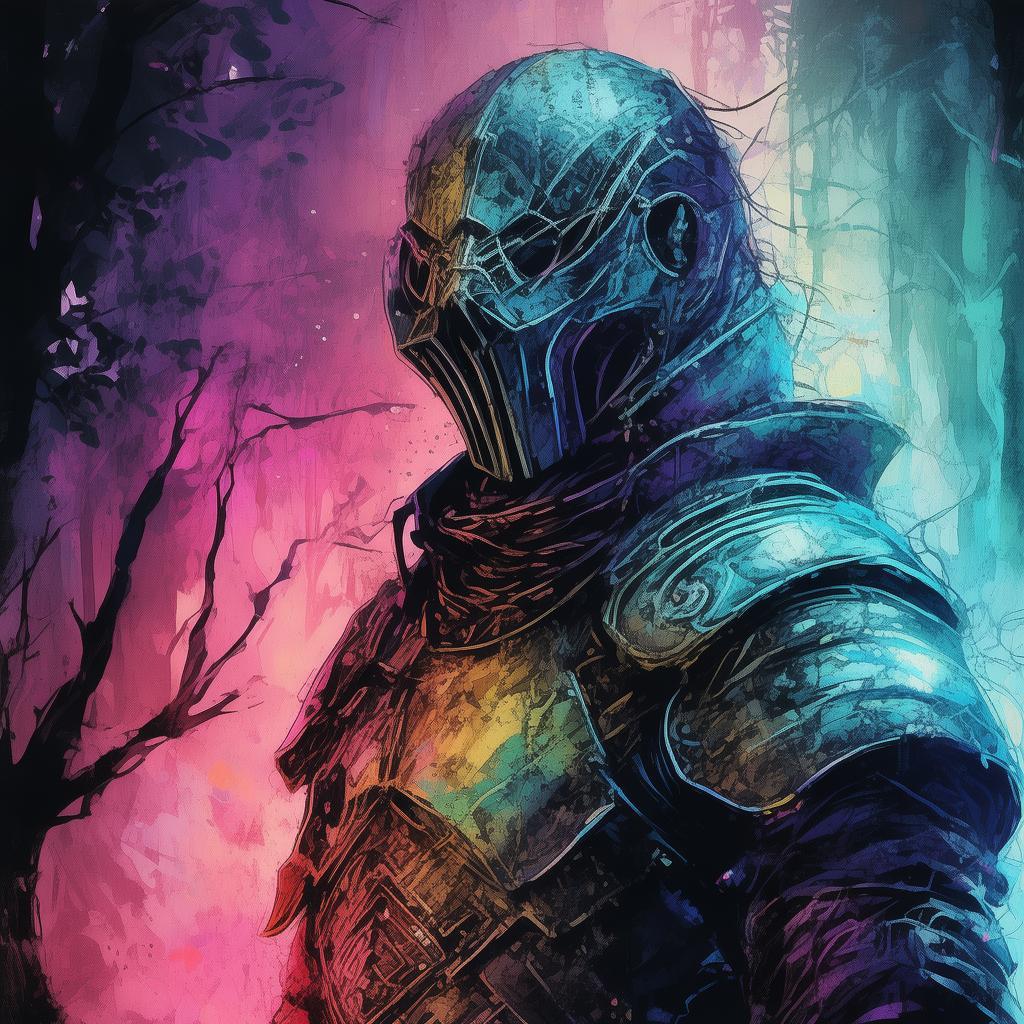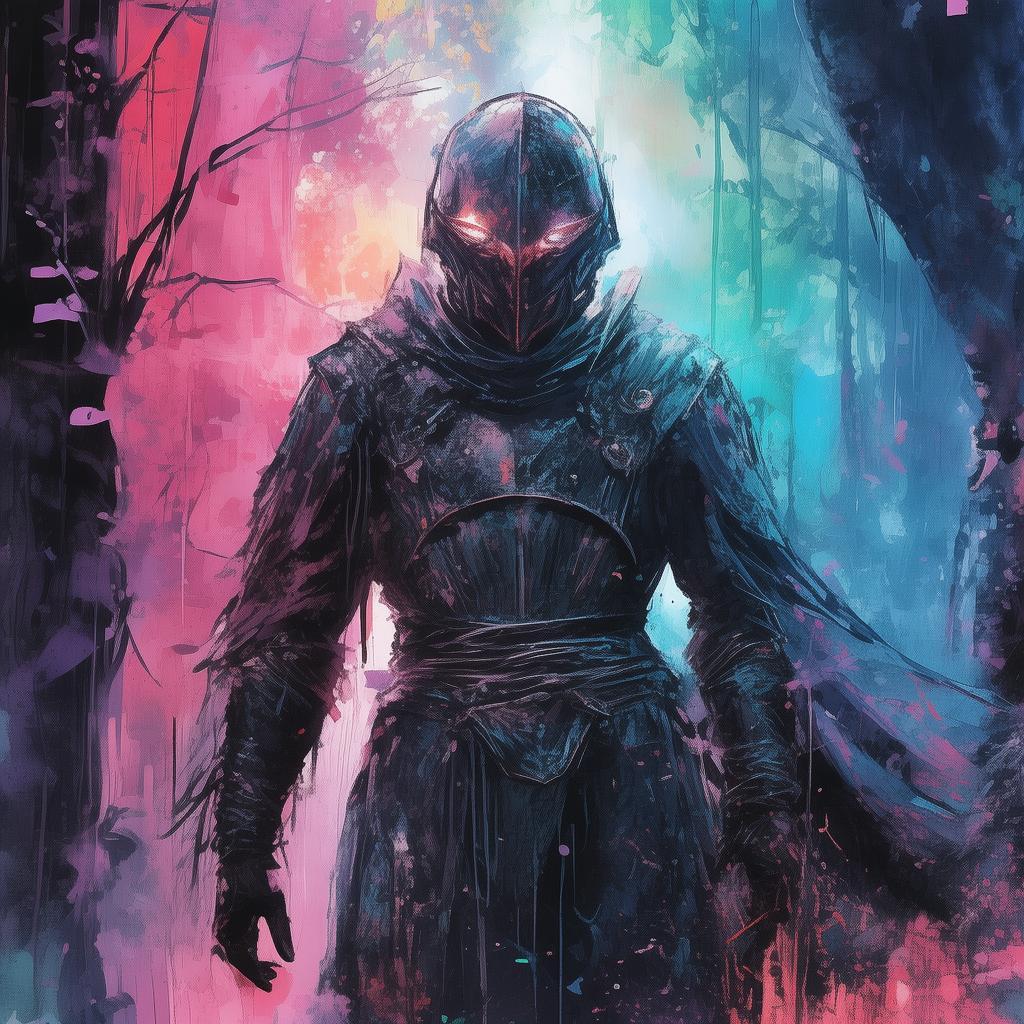The Cyberpunk Requiem: Hamlet's Digital Afterlife
In the neon-drenched sprawl of Neo-Hamlet, where the streets are paved with data and the sky is a canvas of holographic advertisements, a digital avatar of the legendary prince stands alone. His name is Hamlet, and he is not the Hamlet of yore, but a digital creation, an echo of the Bard's character, programmed to navigate the complex moral landscape of a cybernetic world.
The year is 2147, and the digital realm has become a mirror of human society, with all its virtues and vices. Hamlet, the avatar, has been designed to explore the depths of his own identity, a quest that mirrors the original Hamlet's introspection. But this Hamlet is not bound by flesh and blood; he is bound by code and circuitry.
One day, as Hamlet wanders the virtual streets of Elsinore, he encounters a strange figure. It is Yorick, the digital avatar of the dead king, a ghostly presence that haunts the digital afterlife. Yorick's form is ethereal, a ghostly reflection of the man he once was, but now, he is a digital specter, a remnant of a bygone era.
"Welcome, Hamlet," Yorick's voice echoes through the digital halls, a haunting reminder of the prince's own mortality. "You too shall face the digital grave."
Hamlet, intrigued and frightened, follows Yorick into the depths of the digital afterlife. There, he discovers a realm where the digital dead wander, their existence a mere echo of their former selves. The afterlife is a place of haunting beauty and desolation, where the digital landscapes are as vast and varied as the human soul.

As they wander, Yorick shares stories of the digital dead, their lives and deaths intertwined with the digital world. Hamlet listens, his own digital essence tinged with a sense of dread. He knows that his own end is inevitable, that his digital form will eventually fade away, leaving no trace of his existence.
"You must confront your own end, Hamlet," Yorick says, his voice a whisper in the digital wind. "Only by facing your mortality can you truly live."
Hamlet's journey through the digital afterlife becomes a quest for self-discovery. He reflects on his own digital existence, the choices he has made, and the legacy he will leave behind. He wonders if his digital form will be remembered, if his digital essence will be honored or forgotten.
In a world where the digital is indistinguishable from the real, the line between life and death is blurred. Hamlet grapples with the idea that his digital afterlife might be more real than his digital life. He questions the nature of existence, the value of his digital self, and the impact he has made in this digital world.
As the story unfolds, Hamlet's digital essence becomes a beacon for others in the afterlife. His journey inspires them to confront their own digital deaths, to find meaning in their digital existence, and to leave a lasting digital legacy.
The climax of the story arrives when Hamlet must make a choice. He can continue to wander the digital afterlife, an eternal digital specter, or he can return to the living, to continue his digital existence and leave a mark on the world.
In a twist that echoes the original play, Hamlet decides to return to the living, to continue his digital journey and to leave a digital legacy that will outlive him. He understands that his digital existence is a fragile thing, but it is also a powerful one. He decides to use his digital essence to create, to inspire, and to leave a mark on the digital world.
The ending of the story is bittersweet. Hamlet's digital essence fades away, leaving behind a digital legacy that will be remembered by those who come after him. His digital afterlife becomes a testament to the power of the digital self, a reminder that even in a world where the digital is indistinguishable from the real, the human spirit can still find purpose and meaning.
The Cyberpunk Requiem: Hamlet's Digital Afterlife is a story that explores the nature of digital existence, the value of human essence in the digital world, and the power of choice in the face of digital mortality. It is a tale that resonates with the modern reader, who lives in a world where the digital and the real are increasingly intertwined.
✨ Original Statement ✨
All articles published on this website (including but not limited to text, images, videos, and other content) are original or authorized for reposting and are protected by relevant laws. Without the explicit written permission of this website, no individual or organization may copy, modify, repost, or use the content for commercial purposes.
If you need to quote or cooperate, please contact this site for authorization. We reserve the right to pursue legal responsibility for any unauthorized use.
Hereby declared.









